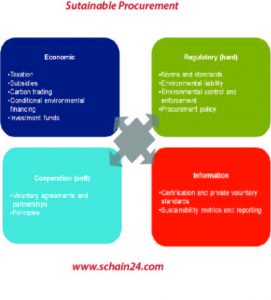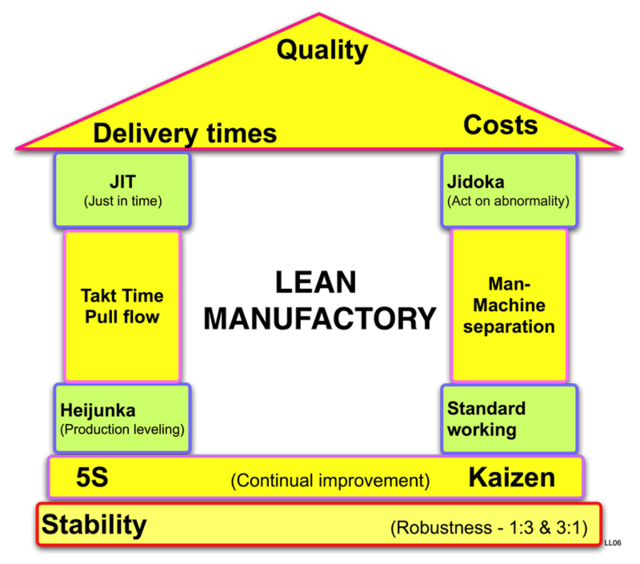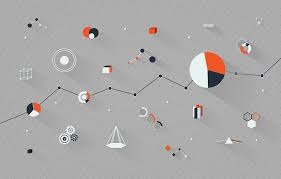
Abstract
There are different levels of focus in the dimensions of sustainability and also sustainable procurement. Focus on the supply chain network entails managing and balancing the supplier portfolio. The impact of fair trade or eco-labels can be on end-user buying behavior. CSR purchasing policies and CSR functions are integrated with purchasing.
Keyword: sustainable procurement.
Introduction
Sustainable procurement is a process whereby organizations meet their needs for goods, services, works, and utilities in a way that achieves value for money on a life-cycle basis while addressing equity principles for sustainable development, benefiting societies and the environment across time and geographies. Procurement is considered sustainable when organizations broaden this framework by meeting their needs for goods, services, works, and utilities in a way that achieves value for money and promotes positive outcomes not only for the organization itself but for the economy, environment, and society. Ethics, culture, safety, diversity, inclusion, justice, human rights, and the environment are additionally listed as important aspects of the Sustainable procurement process. There appears to be growing interest in sustainable operations and more specifically supply chain management (SCM) and procurement within the academic community.
Social dimensions of sustainability
There are different levels of focus in the dimensions of sustainability. While individually focusing on the environment, the impact of fair trade or eco-labels can be on end-user buying behavior. And while organizationally focusing on the environment it can be the integration of sustainability criteria in calls for tender, CSR purchasing policies, and CSR functions are integrated with purchasing. Shading light on the Buyer-Supplier dyad in social criteria of environment can be Supplier selection and acceptable labor practices and Supplier training in sustainable practices. Focus on the supply chain network entails managing and balancing the supplier portfolio, child labor, underpaid employees in sub-tier suppliers, etc. Focus on market and society entails NGO practices and impact on fair trade, government policy, and standards on sustainable purchasing.
Environmental dimensions of sustainability
Individual focus on environmental dimensions of sustainability helps change end-user consumption patterns for reduced consumption of resources, and consumer awareness of environmental issues and impact on buying behavior. Organizationally impacts on the environment to the management of the purchasing Interface with other functions with Marketing, R and D. Also help policy and practices relative to sourcing or use of restricted products in environmental policy and recycling strategies. Buyer and supplier collaborating to reduce packaging, CO2 emissions, energy, and water consumption. And Buyer and supplier collaborate to increase resource productivity and reduce waste. The supply chain network environment is impacted by pollution in sub-tier suppliers, and CO2 affects the supply chain. Market and society are environmentally impacted by NGO impact on scarce raw materials, carbon trading practices, regulatory impacts, also supplier and buyer government lobbying practices
Economic dimensions of sustainability
Individual focus economic dimensions of sustainability help reduction in fuel consumption, qualities and characteristics of the individual members of the responsible purchasing function in the firm. When the organization is focused are economic dimensions impacted by the development or Optimising of the sustainable purchasing function in the firm, purchase vs. rent strategies and practices, and purchasing staff skills development, awareness, and training, When the economic dimension of sustainability has been focused by the buyer-supplier dyad, Supplier/Buyer cooperation for cost reduction and sustainability, bribery and corruption, and fair profit issues are emphasized. When the level of focus is the supply chain network economic dimension of sustainability is Innovation via the design and management of the supply network, and fair price practices down the supply channel. When market and society are the focus and the economic dimension of sustainability is Supporting disadvantaged sections of society through buying from SMEs, minority-owned firms, etc.
Conclusion
Sustainable procurement is increasingly on the agenda for purchasing and supply managers seeking to demonstrate corporate social responsibility in their supply chains. Sustainable procurement has its dimensions in economics, society, and the environment. We have to recognize them when doing business and procurement.
References:
1 “Public Procurement for Sustainable Development”. Chatham House – International Affairs Think Tank. November 19, 2020. Retrieved March 15, 2021
2. Walker.Helen, Miemczyk, Joe, Johnsen. Thomas, Spencer.Robert (2012). “Sustainable Procurement: Past, Present, and Future”, Journal of purchasing and supply management, Volume 18, Issuecember 2012, Pages 201-206
https://upload.wikimedia.org/wikipedia/commons/1/1c/Typology_of_market_governance_mechanisms.png
https://upload.wikimedia.org/wikipedia/commons/1/1c/Typology_of_market_governance_mechanisms.png





